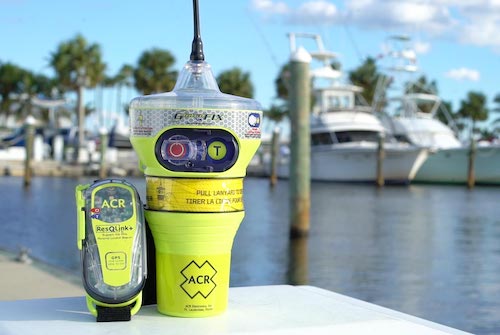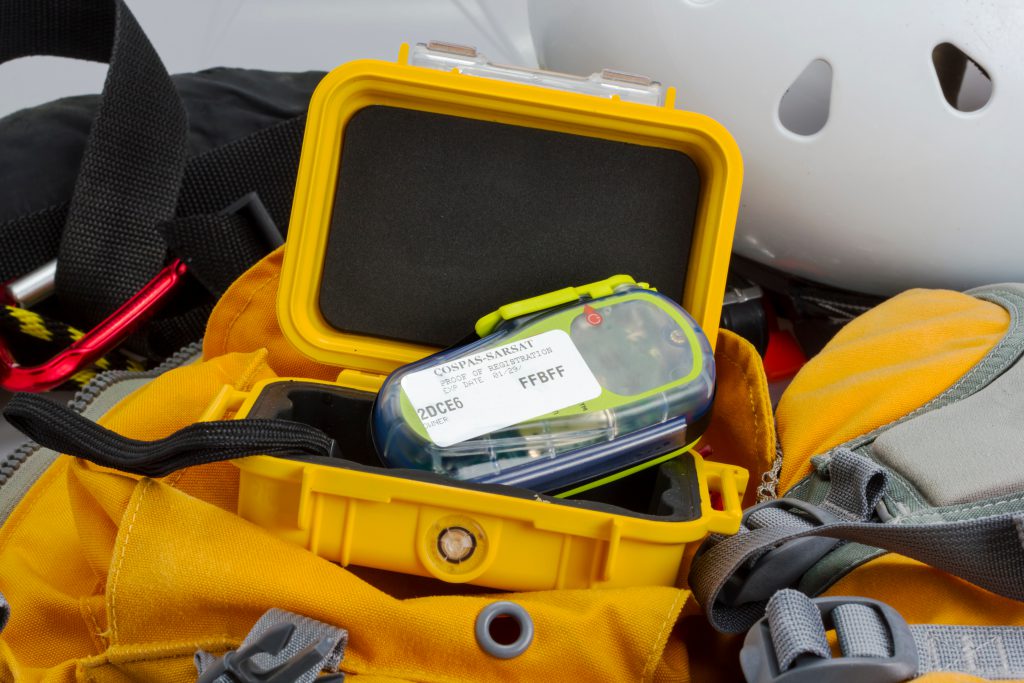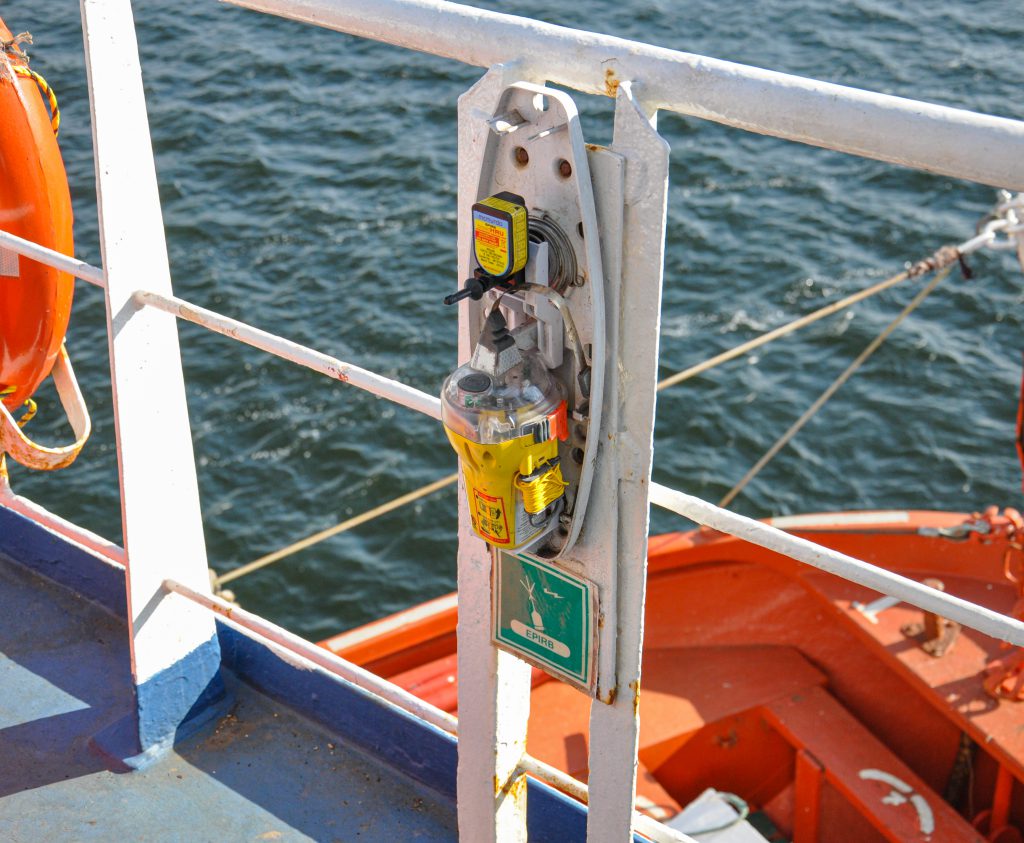EPIRBS, PLBs, and Your Safety
June 3rd, 2022 by team

by B.J. Porter (Contributing Editor)
If you’ve ever equipped your boat to go offshore, you know you’re supposed to have an EPIRB on board. But can you use a PLB instead? Why might you want a PLB or other beacon device in your life jacket? How to use and maintain them?
Technological development has given us some fantastic tools to increase our odds of getting rescued at sea, but the array of gear has gotten more bewildering. It has gotten less expensive (mostly) for some of these products, so there’s less excuse for not using them. Satellite beacons are easy to use and a great safety net.
Satellite Based Rescue
Both EPIRB (Emergency Position Indicating Radio Beacon) and PLB (Personal Locator Beacon) work around the same core technology. When activated, they signal a satellite based rescue system. This signal contains position information for where the beacon was activated, and identifying information about the beacon registry.
When satellite receives the signal, notification of authorities happens in about a minute. With the beacon ID they can figure out the vessel (EPIRB) or individual (PLB) associated with the device, and notify next of kin/emergency contacts and regional search and rescue.
EPIRB vs. PLB

So how is an EPIRB different from a PLB? There are a few key ways.
- An EPIRB is associated with a vessel, and may be permanently mounted. A PLB is portable and carried, and registered to an individual.
- EPIRBs are a fair amount larger.
- Because they are larger, EPIRBS have bigger batteries a 48 hour run time, strobes, and they’re designed to float. A PLB will usually last 24 hours, and may not float or have a strobe.
- EPIRBs may be Category I, which deploy automatically when submerged, or Category II, which must be manually activated, or in some cases come in contact with water. PLBs do not automatically deploy or trigger.
- Newer PLBs are small enough to install in life jackets, though will not automatically activate.
- PLBs are cheaper, about half the cost of an EPIRB.
Is one better than the other? That depends on your needs. If you don’t own a boat, you don’t need an EPIRB, though you can bring one on a boat if you’re a passenger or crew. And you wouldn’t take an EPIRB hiking with you in the woods.
But a PLB isn’t a great choice as the automatic satellite safety net for a boat for a few reasons. They’re small and can get lost since they don’t get mounted on things, their registration information isn’t tied to a vessel, and most important they do not automatically deploy and activate in a disaster.
That doesn’t mean a PLB isn’t a bad thing to keep in the ditch bag, just in case you don’t get to grab the ship’s EPIRB when you get into the life raft.
EPIRB & PLB Use

A Category I EPIRB will deploy if your boat sinks, if installed some place appropriate. There’s a hydrostatic release on the Category I, so if the case goes more than two meters (six feet) under water it will break free of the case and float to the surface and be activated. But be careful where you put it – if you install it inside the cabin, it may break free if the boat sinks, but it may never get activated if can get out of the saloon.
A Category II requires manual activation and will not float free of the boat if it’s attached. Some have water sensors and will activate if they are immersed in water, but you need to be involved in the process. Install them some place easy to reach on the way out of the boat.
Getting a Category I out of its auto deploying case is fairly easy, and it’s a good idea to grab it and take it with you if you abandon ship to a life raft instead of leaving it to deploy with the boat. A ship can sink quickly and the auto-release will make sure someone knows you’ve sunk. But if you have time, it’s better to keep the beacon with the people who need rescuing.
Activating your Device
Category I – will deploy if pulled under water and self-activate. There’s also a manual activation switch on them for triggering it.
Category II – some may activate if you toss them in the water (though make sure you’ve tied a line to it!), and others you may have to flip a switch on the outside.
PLB – A PLB only has an activation switch, so you will have to press that yourself.
These switches are more than just a simple button, there’s a protective cover or slide of some sort to prevent accidental activation. It’s not a bad idea to read the instructions and understand how to do this before you need to deploy it for real.
Maintenance
Satellite beacons are low maintenance items, so much so that it’s easy to forget about their maintenance schedules and miss them. It’s like changing the batteries in your smoke alarms, you need to find a habit to remember it.
All Devices
- Registration. Too many forget to register devices when new, so do it immediately. You’ll get reminders to renew the registration every couple of years and update any information; do it promptly.
- Self Test. Near the activation switch, you’ll find a self-test button. Your manual probably says do this once a month or some schedule no one remembers. Follow the directions if you can; we’ll commend your discipline if you keep the schedule. If you’re like the rest of us, it’s a good idea to self test before you head out on a passage, and it only takes a moment.
- Inspection. When you do your self test, look for wear and tear, cracks, sun fading, or visible damage. Keep an eye on quick release covers out in the sun and elements, to make sure they aren’t degrading.
- Batteries. Older models had batteries good for four or five years. Newer models can be good out to ten years. But time flies, so you check your expiration date at the start of the season just to make sure your battery or unit isn’t due for replacement.
Category I EPIRBS
The hydrostatic releases on Category I devices are good for two years from installation and are not serviceable. They must be replaced, but this isn’t difficult. Check the instructions and dates on your EPIRB at least annually and replace on this schedule.
- Posted in Blog, Boating Tips, Cruising, Fishing, iNavX, Navigation, Reviews, Sailing, Sailing Tips
- No Comments
- Tags: EPIRBS, life jacket, locator, PLB, PLBs, Safety


Leave a Reply